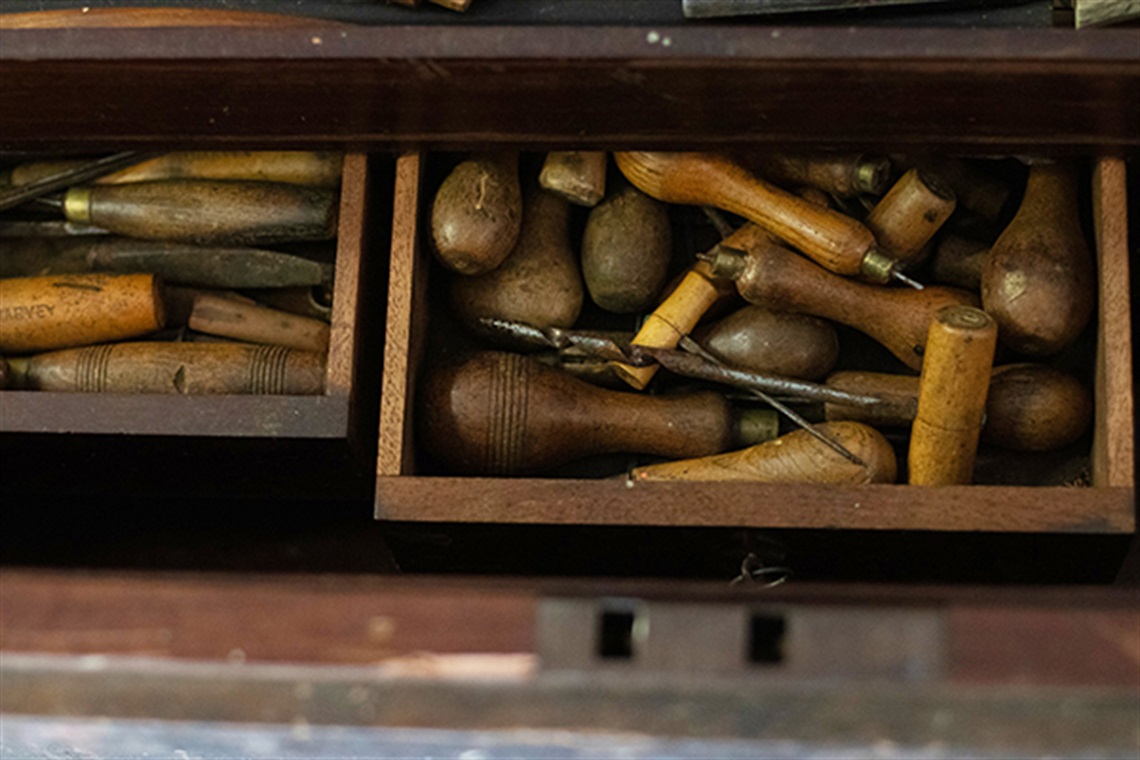The Tool Chest
Published on October 30, 2023

In a workshop, a young lad engaged in a carpentry apprenticeship skilfully constructed his very own tool chest. Using all the skills he had learned, he built the chest with durability in mind. Although it was a plain, heavy, and sturdy box, it was extremely well-made and designed to be an integral part of the young man’s working life.
This young man was Josiah Harvey, born in 1870 in St Cleer, Cornwall, who crafted the chest potentially as far back as the late 1880s. His chest has endured the test of time, remaining fully intact and sturdy to this day.
As Josiah became a working man, the chest would have been a vital part of his working life. Slowly he would have stocked it with the specialised tools he needed, including ones he crafted himself.
Josiah worked as a cabinet maker in England, then sailed across the sea with his trusty tool chest to New Zealand at the age of 40. He settled in Levin and by 1910 he was already part of building the future of Levin.
For the next few decades Josiah built many houses and buildings around the Horowhenua. These included both of the Methodist Church’s at Te Horo and Levin, the Levin Fire station, the Ōhau Store and even the bridge over the Hōkio Stream. This is just a small sample of what he contributed to the district.
The tools and chest would not have been part of the big builds, instead they would have been in the workshop used to make furniture and other joinery projects. Many of these pieces Josiah created would have been present in the houses of Levin for many years and maybe just maybe, some furniture, mantels, and moulding’s from that time are still in our buildings today.
An example of this occurred in 1932, when Josiah carved columns for a local lodge. He meticulously chose the timber, and when the columns were on display in Mr. Shaw's window, the Horowhenua Chronicle featured them in an article. Within the article, the following was mentioned: “Mr Harvey has done very little carving since coming to New Zealand and some of the tools he used on this work were taken out for the first time since he arrived here.” The fact that the chest and tools remained part of Josiah’s working life, and perhaps even doubled as a makeshift bench to rest and have his morning smoko, is impressive.
In August, an exhibition held at Te Takeretanga o Kura-hau-pō showcased the tool chest as the star attraction. It drew in many people, who shared their stories of similar chests and tools owned and used by men in their families.
As they shared their stories, there was a realisation that objects like this are an important part of family history, invoking memories and connections to the past. We are so lucky that Josiah looked after the chest so well, allowing future generations to experience shared stories.
By Kiri Pepene – Library Information Research & Local History Team Lead.